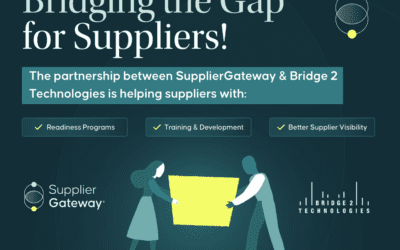Trusted partnerships are the backbone of growth and success. SupplierGateway’s Enhanced Digital Certification (EDC) is a diverse business...
READ MORELeanne Strickler
Return to Resources Leanne Strickler
Understanding Your SG Score: What It Means and Why It Matters
by Leanne Strickler | Mar 28, 2025 | Articles, Risk & Compliance, Suppliers
Understanding Your SG Score: What It Means and Why It Matters If you’re a supplier using the SupplierGateway platform, you’ve likely seen your SG Score. But what exactly...
Bridge 2 Technologies and SupplierGateway Forge Strategic Alliance to Revolutionize Supplier Growth and Economic Expansion
by Leanne Strickler | Mar 26, 2025 | Press Releases
Partnership unites a vast network of vetted, emerging suppliers and businesses with robust resources for corporate business opportunities, networking, supplier readiness,...
Product Updates for Q1 2025
by Leanne Strickler | Mar 18, 2025 | Product Updates
At SupplierGateway, we’re constantly innovating to give you a better, faster, and more efficient experience. Our Q1 2025 product updates are designed to streamline your...
- Safe and Trusted Partnerships: EDC Certification is a Clean “Business” Bill of Health
- ArcNav – Setting Companies Up for Success and Empowering Organizations to Achieve Peak Efficiency
- 15 Crucial Supplier Compliance Checks
- (Webinar) Reshoring & Inclusive Sourcing Reimagined Amid Global Tariffs
- Not Just Your Average Candy – “Candy With a Purpose” – Supporting Wellness with Organic Treats












